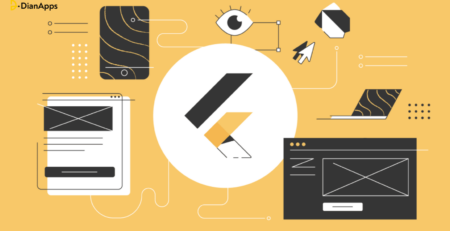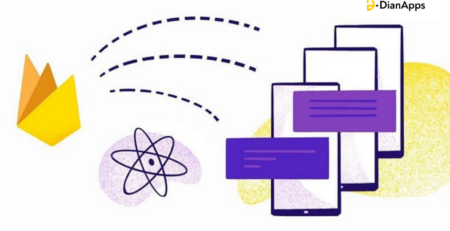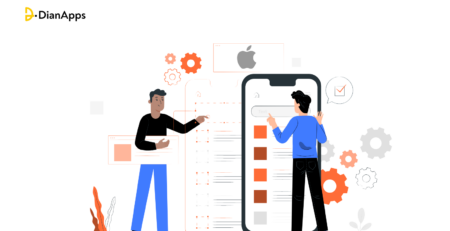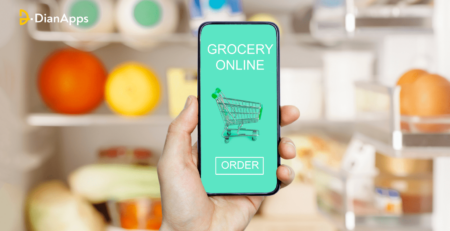How Much Does it Cost to Develop an OTT App Like Netflix?
Have you ever wondered how much it costs to develop a global sensation like Netflix?
What factors influence the budget for creating an OTT platform?
These questions resonate with many entrepreneurs and businesses venturing into the OTT space. As the demand for on-demand entertainment surges, platforms like Netflix have set benchmarks not just in content but also in technology, personalization, and user experience.
The OTT industry is projected to grow to $434 billion by 2027, driven by advancements such as 5G networks and AI-powered recommendations.
Netflix, a frontrunner, reportedly spent over $17 billion on content creation in 2022, emphasizing how critical high-quality, diverse offerings are to retain a global audience
In this blog, we will uncover the various cost components of developing an OTT app like Netflix, helping you understand the investment required to enter the thriving OTT market.
What Influences the Cost of Developing an OTT App Like Netflix?
When it comes to building an OTT app, various factors contribute to the overall cost. Let’s dive into the most crucial elements:
1. Platform Selection
The choice of platforms—Android, iOS, Web, Smart TVs, or all of them—plays a significant role in determining costs. Developing for multiple platforms simultaneously can increase costs but ensures a broader audience reach. For instance, apps optimized for Smart TVs like Roku and Fire TV add layers of complexity and cost.
2. Features and Functionalities
The core features of an OTT app include:
- User Profiles: Customization for multiple users under one account.
- Content Delivery Network (CDN): Ensuring seamless streaming without buffering. High-end solutions like AWS or Akamai increase costs but are essential for performance.
- Search and Recommendation Engine: AI-driven recommendations based on user preferences, which demand complex algorithms.
- Monetization Models: Whether subscription-based (SVOD), ad-supported (AVOD), or transactional (TVOD), implementing these models adds to development costs.
3. Content Licensing and Creation
Netflix reportedly spends billions on acquiring and producing original content. While startups may not match these numbers, securing high-quality content is a critical investment.
4. UI/UX Design
The design must be intuitive and visually appealing across devices. The cost increases if you prioritize accessibility, responsiveness, and platform-specific customization.
Also read: What are the steps to hire UI/UX firms
5. Security Measures
Content piracy is a significant concern for OTT platforms. Implementing advanced security measures, including DRM (Digital Rights Management), token-based authentication, and encrypted streaming, is crucial but costly.
6. Backend Development
Robust backend infrastructure ensures:
- Scalability to handle millions of users.
- Efficient content storage and delivery.
- Data analytics for better user engagement.
7. Third-Party Integrations
Features like payment gateways, analytics tools, and social sharing increase costs but enrich the user experience.
8. Maintenance and Updates
Post-launch expenses include regular updates, bug fixes, and server maintenance to ensure smooth operations.
For a business aiming to develop a Netflix-like platform, costs can range anywhere from $25,000 for an MVP to $500,000 or more for a feature-rich application catering to millions of users.
In the next section, we’ll provide a breakdown of these costs to help you plan your budget effectively.
Cost Breakdown: Developing an OTT App Like Netflix
Creating an OTT app requires strategic allocation of resources across various components. Here’s a detailed cost breakdown to help you estimate the investment:
Platform Development
The platforms you choose to launch your app on—mobile (iOS, Android), web, or Smart TVs—impact the development costs. Each platform requires specific coding standards and optimization.
- Mobile Platforms: For apps designed for iOS and Android app development services, costs range between $10,000 and $40,000 per platform. Factors like native vs. cross-platform development influence this.
- Web Applications: Adding a web app ensures accessibility across browsers and devices. Developing a responsive, feature-rich web app can cost $15,000 to $50,000.
- Smart TVs: Integrating your app with Smart TV ecosystems (e.g., Roku, Fire TV) adds another $20,000 to $100,000 per platform due to specialized development needs.
Backend Infrastructure
A strong backend handles content storage, user data, and streaming capabilities, ensuring a seamless experience.
- Cloud Hosting Services: Using services like AWS or Google Cloud to store and stream content costs $5,000 to $20,000/month depending on the user base and data volume.
- Database Setup: A robust database ensures quick access to user preferences, watch history, and analytics. Initial setup can cost $3,000 to $10,000.
- Scalability: Scaling the servers as user numbers grow can cost an additional $1,000 to $5,000/month.
Core Features Implementation
Essential features differentiate your app from competitors and enhance user engagement.
- User Profiles: Allowing personalized profiles for multiple users per account can cost $5,000 to $10,000.
- Streaming and CDN Integration: Ensures uninterrupted, high-quality video playback. CDNs like Akamai or AWS add $10,000 to $50,000.
- Recommendation Engine: Advanced AI algorithms for personalized content suggestions range from $20,000 to $60,000.
- Search Functionality: A well-optimized search bar costs $5,000 to $15,000, with filters and voice search adding extra.
UI/UX Design
Investing in intuitive design is critical for user retention. Costs may range from $8,000 to $25,000, based on the number of platforms and desired features like dark mode or accessibility options.
Also read: Top intuitive UI/UX design tools for contemporary designers
Content Acquisition and Licensing
For startups, acquiring third-party licensed content may range from $10,000 to $100,000, depending on the catalog size and quality. Creating original content can dramatically increase costs.
Security Features
Protecting content and user data ensures trust and compliance.
- DRM & Encryption: Prevent piracy and unauthorized access. Costs range from $8,000 to $20,000.
- Data Compliance: Implement GDPR-compliant features for $5,000 to $15,000
Third-Party Integrations
Enhance functionality by integrating external tools.
- Payment Gateways: Adding payment systems like Stripe or PayPal costs $2,000 to $10,000. If in case you are interested in knowing how the cost of building an app like PayPal, here’s the blog you need to read!
- Analytics Tools: Integrations like Google Analytics or Mixpanel cost $1,000 to $5,000.
Marketing and Launch
Promoting your app effectively ensures visibility and user acquisition.
- App Store Optimization (ASO): Optimizing app listings costs $2,000 to $5,000.
- Digital Marketing Campaigns: A recommended budget for initial campaigns ranges from $10,000 to $50,000.
Don’t know how to upload an app on the App Store? Here’s the guide you need handy while launching your project in the market!
Revenue Models for an OTT App Like Netflix
1. Subscription-Based Model (SVOD)
The subscription-based model is the cornerstone of most successful OTT platforms like Netflix. This model involves users paying a recurring fee—monthly, quarterly, or annually—for access to a vast content library.
The subscription price typically varies based on the plan chosen, with higher-priced tiers offering additional features such as higher-quality streaming or multi-user access.
The consistency of revenue that this model provides is one of its biggest advantages, but it also demands a steady flow of high-quality content to keep subscribers engaged. If the content library doesn’t meet users’ expectations, they may choose to unsubscribe.
2. Advertising-Based Model (AVOD)
The advertising-based model allows users to access content for free, with ads supporting the platform’s revenue.
This model is a great way to attract users who are hesitant to pay for a subscription, as it offers free access in exchange for viewing ads during the content. Platforms like YouTube and Hulu’s ad-supported tier have adopted this model successfully.
However, one challenge with AVOD is ensuring that ads don’t overwhelm users, which could lead to dissatisfaction and a higher churn rate. It is important to balance the quantity of ads with user experience.
3. Transactional Model (TVOD)
In the transactional model, users pay on a per-title basis to rent or purchase movies or shows, rather than subscribing for an all-access pass.
This model is commonly used by platforms that focus on offering popular or exclusive content that users may not want to pay for through a subscription but are willing to rent or purchase.
While it offers more flexibility to users, it typically requires a diverse and high-quality library to attract and retain customers. Platforms like Amazon Prime Video offer both transactional and subscription options, catering to a broader audience.
4. Hybrid Model
A hybrid model combines two or more revenue-generating strategies, allowing the platform to offer both subscription-based and advertising-supported access. In this model, users can either choose to pay for an ad-free experience through a subscription or access content for free with advertisements.
Hulu and Peacock are great examples of platforms using the hybrid model. This approach allows platforms to reach a wider audience by offering different access levels, but it requires careful management to ensure neither model detracts from the other.
5. Freemium Model
The freemium model gives users access to a basic version of the service for free, with premium features reserved for paying customers.
Users can enjoy limited content or functionality at no cost, but if they want access to exclusive content or additional features, they need to upgrade to a paid plan.
Popular platforms like Spotify and YouTube have successfully adopted this model. While the free version can attract a large user base, the challenge lies in converting enough free users into paying subscribers to make the model profitable.
Future Trends in OTT App Development
The OTT space is constantly evolving, driven by emerging technologies and shifting consumer demands. Here are some key trends that will shape the future of OTT app development.
AI-Powered Personalization
AI will continue to enhance user experiences by delivering highly personalized content recommendations based on viewing history and preferences.
Live Streaming and Interactive Content
Live streaming and interactive shows are gaining popularity, allowing users to engage with content in new ways, such as influencing storylines or participating in real-time events.
5G and Ultra-HD Streaming
The widespread adoption of 5G will lead to faster streaming speeds, enabling OTT platforms to offer ultra-high-definition content with minimal buffering.
Augmented and Virtual Reality
AR and VR technologies are on the rise, providing immersive viewing experiences that could revolutionize how we watch and interact with content.
Blockchain for Content Security
Blockchain will enhance content security and enable transparent monetization models by protecting against piracy and ensuring fair revenue distribution.
Timeline for Developing an OTT App
Developing an OTT app like Netflix involves multiple stages, each requiring careful planning, testing, and execution. Depending on the complexity of the app and the team working on it, the development process can take anywhere from 6 months to over a year. Below is a general timeline for the development process:
1. Planning and Requirements Gathering (2-4 Weeks)
The first step in developing an OTT app is to define the project’s scope. This includes identifying the key features of the app, such as content streaming, subscription management, and user authentication. During this phase, you’ll also research the market, assess competitors, and set the project timeline and budget. This process typically takes 2-4 weeks.
2. Design and Prototyping (4-6 Weeks)
Once the project requirements are clear, the next step is designing the app’s user interface (UI) and user experience (UX). This phase includes creating wireframes, visual mockups, and interactive prototypes. The goal is to ensure that the app is both functional and user-friendly. Depending on the complexity of the design, this stage could take 4-6 weeks.
3. App Development (6-8 Months)
This is the longest phase, where the actual development of the app begins. The app is typically built in parallel for multiple platforms (iOS, Android, and web). Key tasks in this phase include backend development, video streaming integration, subscription management, content management, and security features. Development of an OTT app could take 6-8 months depending on the complexity of the features and integrations.
4. Testing and Quality Assurance (2-4 Weeks)
After development, the app undergoes rigorous testing to ensure that all features work as expected. This includes functionality testing, performance testing, security testing, and usability testing. Any issues discovered during testing are fixed before the app moves to the next phase. This phase generally takes 2-4 weeks.
5. Deployment and Launch (1-2 Weeks)
Once the app passes the testing phase, it is ready to be deployed. This includes uploading the app to app stores (iOS App Store, Google Play Store) and making it available to the public. The deployment phase can take 1-2 weeks depending on the app store review processes and any required adjustments.
6. Post-Launch Support and Updates (Ongoing)
After the app is launched, you will need ongoing support to address user feedback, fix bugs, and roll out updates. This phase is continuous and includes maintaining the server, updating the app to be compatible with the latest devices and operating systems, and adding new features. Typically, this phase continues indefinitely.
Why Choose DianApps for OTT App Development?
DianApps stands out as a premier partner for developing cutting-edge OTT apps, offering expertise and innovative solutions tailored to your business goals. Here’s why you should choose DianApps for your OTT app development needs:
Expertise in Custom Development
With years of experience in building mobile apps, web platforms, and custom solutions, DianApps specializes in delivering high-quality OTT apps that cater to both small-scale and large-scale needs. Our team of skilled developers ensures your app is built to offer seamless video streaming, robust content management, and enhanced user engagement.
Tailored Solutions for Diverse Needs
We understand that every business has unique requirements. DianApps takes the time to analyze your specific goals, audience, and content, creating a bespoke solution that matches your vision. Whether you need a simple video-on-demand platform or a feature-rich, interactive OTT experience, our team will deliver a solution aligned with your business objectives.
Scalable and Secure Infrastructure
At DianApps, we prioritize the scalability and security of your OTT app. As your platform grows, we ensure that your app can handle a large volume of content and users without compromising on performance. We use robust cloud services, like AWS and Google Cloud, to build an infrastructure that’s both reliable and scalable. Additionally, our advanced security measures protect your content from piracy and safeguard user data.
Innovative and Future-Ready Technologies
DianApps stays ahead of industry trends and incorporates the latest technologies, such as AI-powered recommendations, 5G optimization for ultra-HD streaming, and interactive content features, into your OTT platform. We ensure that your app not only meets current standards but is also ready for future technological advancements, like AR/VR integration and blockchain-based monetization.
Seamless User Experience (UX/UI)
A key factor in the success of any OTT platform is the user experience. Our design team focuses on creating intuitive, easy-to-navigate interfaces that enhance user satisfaction. Whether it’s for mobile or web-based access, we ensure that the design is optimized for all devices, providing a smooth and enjoyable viewing experience.
Comprehensive Post-Launch Support
At DianApps, our commitment doesn’t end after launch. We provide continuous support to ensure your OTT app remains fully functional, up-to-date, and competitive. From troubleshooting to implementing new features based on user feedback, our post-launch services ensure the longevity and success of your platform.
Proven Track Record
DianApps has a proven history of delivering successful projects across various domains, including media and entertainment. Our portfolio showcases a range of OTT solutions that have helped businesses streamline content delivery, grow user bases, and enhance engagement.
Cost-Effective Solutions
While building an OTT app like Netflix can be an investment, DianApps ensures you get maximum value for your budget. We provide cost-effective solutions without compromising on quality, offering flexibility in features, development timelines, and ongoing support packages.
Final Thoughts
Building an OTT app like Netflix is a complex yet rewarding venture, requiring careful planning, investment, and technical expertise. The costs of development vary based on features, design, and content, but understanding the key components can help you prepare for the financial commitment and time needed. From app design to backend infrastructure, content licensing, and post-launch support, every element plays a crucial role in creating a seamless and engaging platform.
DianApps stands out as a top choice for OTT app development, offering tailored solutions that focus on scalability, security, and user experience. Our team leverages the latest technologies and industry trends to ensure your app remains competitive in the ever-evolving OTT landscape.
Whether you’re just starting with an OTT idea or looking to enhance an existing platform, DianApps is here to turn your vision into reality. Contact us today to discuss your OTT mobile app development services and how we can help you succeed in this exciting space.




